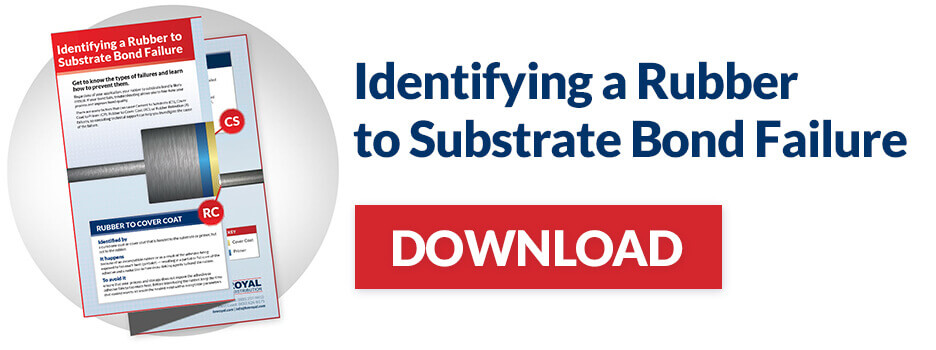How to Properly Select and Apply DuPont Rubber to Substrate Bonding Adhesives
Reading Time: 3 minutes
Across the automotive, medical, utility and many other industries, rubber to substrate bonding is a common process. Creating a successful rubber to substrate bond means both choosing the right adhesive and using the adhesive properly. In all applications, the integrity of the rubber to substrate bond is critical.
The DuPont line of adhesives provides superior strength and bonding capabilities to fit even the toughest rubber to substrate bonding (RTSB) applications. No lead has been added to the formulas for DuPont RTSB adhesives for nearly 20 years.
Proper preparation and handling are critical to ensuring the integrity and reliability of the bond. Improper handling can lead to bond failure, product malfunction, and even harm to employees and customers. This blog shares tips for selecting the best adhesive and application process to ensure strong, long-lasting adhesion.
1. Choosing the right DuPont adhesive
The first step is choosing which DuPont adhesive you should use. The experts at H.M. Royal are here to help recommend the right adhesive for your application from our broad range of products. This recommendation is based on the adhesive’s performance with your specific elastomer — whether it be rubber, polyurethane or something else. We evaluate the performance of each adhesive with your specific elastomer in our lab, and we even provide you with data to back it up.
2. Maintaining proper storage conditions
After selecting the right adhesive, maintaining proper storage conditions is the next vital step in delivering the best bonding performance. DuPont adhesives should be kept sealed and in a dry environment when they aren’t in use. Generally, they should be stored between 60°F and 80°F.
3. Completing all necessary preparations
Once you are ready to apply the adhesive, make sure you complete all of the necessary preparation. First, properly clean and prepare the substrate to allow for the best possible bond. This includes ensuring that there are no barriers left on the substrate’s surface. Barriers such as oil, solvents, rust, and even dust can negatively affect adhesion.
For the best mixing results, H.M. Royal recommends using a propeller style mixer at 60 RPM or higher, depending on the specific technology. Make sure to wear all personal protective equipment and mix the adhesive thoroughly in a well-ventilated location as specified in the technical data sheet.
4. Determining optimal viscosity, dilution ratio and dry film thickness
Before application, be sure to determine the right viscosity, dilution ratio, and dry film thickness for the specific application.
Viscosity
The optimal viscosity for your adhesive will depend on your application method. Generally, spraying will require a lower viscosity, while dipping and brushing will require a higher viscosity. The static viscosity of your adhesive can be roughly measured with a Zahn cup. At H.M. Royal, we are able to measure the dynamic viscosity of your adhesive using a Brookfield viscometer.
Dilution ratio
Changing the viscosity of the adhesive requires proper dilution. To dilute your adhesive, check the technical data sheet for the recommended dilution ratio and diluents.
Dry film thickness
Determining a dry film thickness is important but requires special instrumentation. The dry film thickness is directly related to how diluted the adhesive is.
H.M. Royal is able to make recommendations for viscosity, dry film thickness, and dilution ratio with our advanced equipment and technical expertise.
5. Choosing the best application method
Next, choose the best application method — brushing, spraying, dipping, or another method. Determining the right application method depends on a few factors like cost, size, the complexity of the application area, and desired throughput speed.
Spraying
While spraying tends to be more expensive, it is very efficient in terms of throughput. In some cases, large parts may be cheaper to spray than to brush. To reach proper atomization, spraying requires a lower viscosity adhesive. Be careful not to overspray the parts; this can lead to wasted adhesive.
Dipping
Dipping is the simplest method of application, and the equipment needed is often less expensive than for spraying. Like spraying, dipping can be automated for higher throughput speeds. Dipping requires a proper viscosity so that the adhesive remains on the substrate after removing it from the vat.
Brushing
Brushing is the most time-consuming method, but it allows for the most precise application. For intricate parts, brushing may be needed to properly coat the substrate.
Brushing and dipping have near 100% transfer efficiency, meaning they have the lowest amount of wasted adhesive. This allows a gallon to go 3 times further than with spraying, which has only 25-30% transfer efficiency.
6. Creating the rubber to substrate bond
Now you’re ready to create the bond. After applying and drying the adhesive, you’ll be ready to introduce the rubber and cure it. Avoid long prebake times to prevent the adhesive from curing too soon. Prebake time is the amount of time that coated inserts spend inside of the heated mold before bonding.
Generally, a low prebake time is preferable for bonding, but each adhesive varies in how much prebake it can resist. DuPont’s Thixon 560™, for example, is extremely resistant to prebake. Checking the quality of the bond after molding can help you understand if a good bond has been created.
For more help with applying and evaluating DuPont rubber to substrate bonding adhesives, contact an H.M. Royal expert today.







